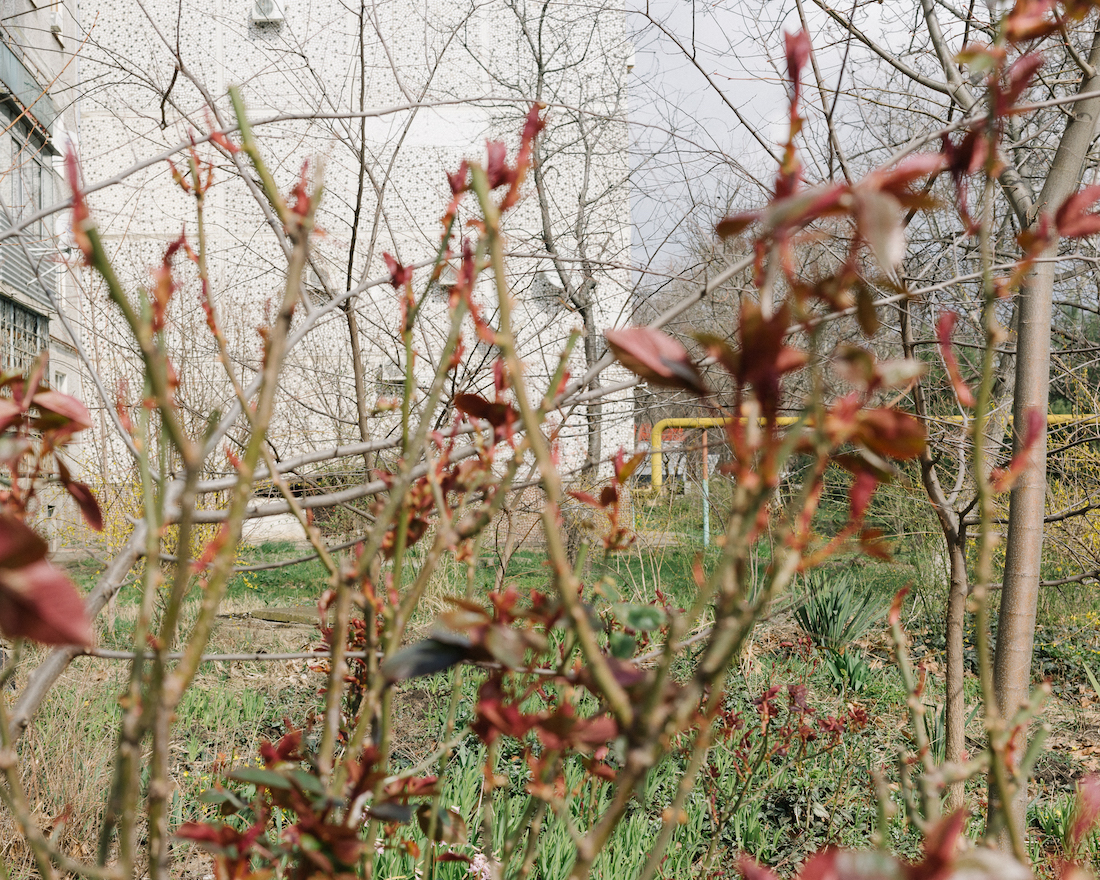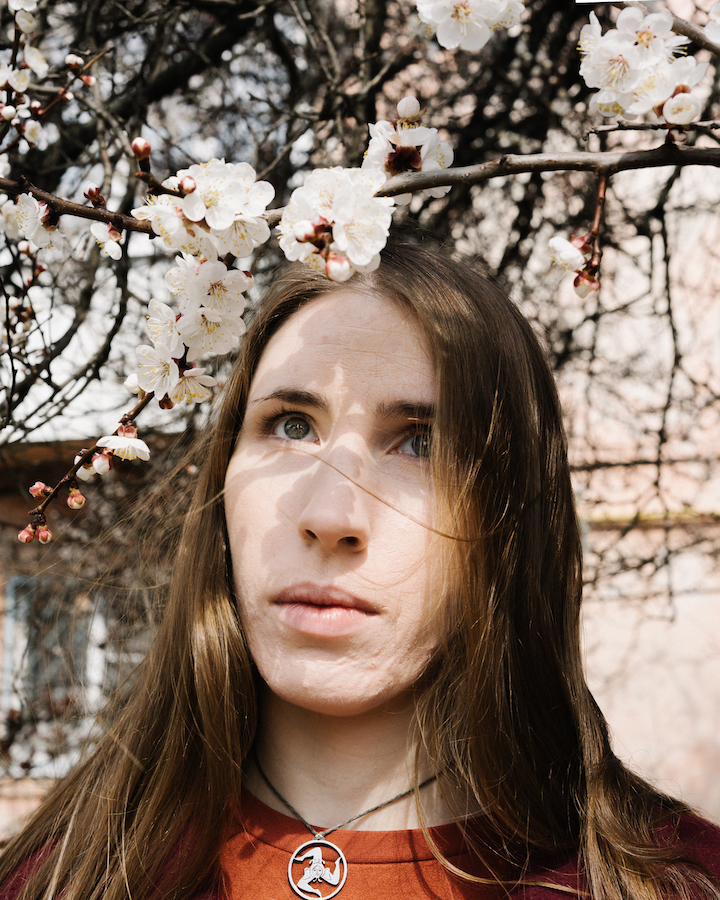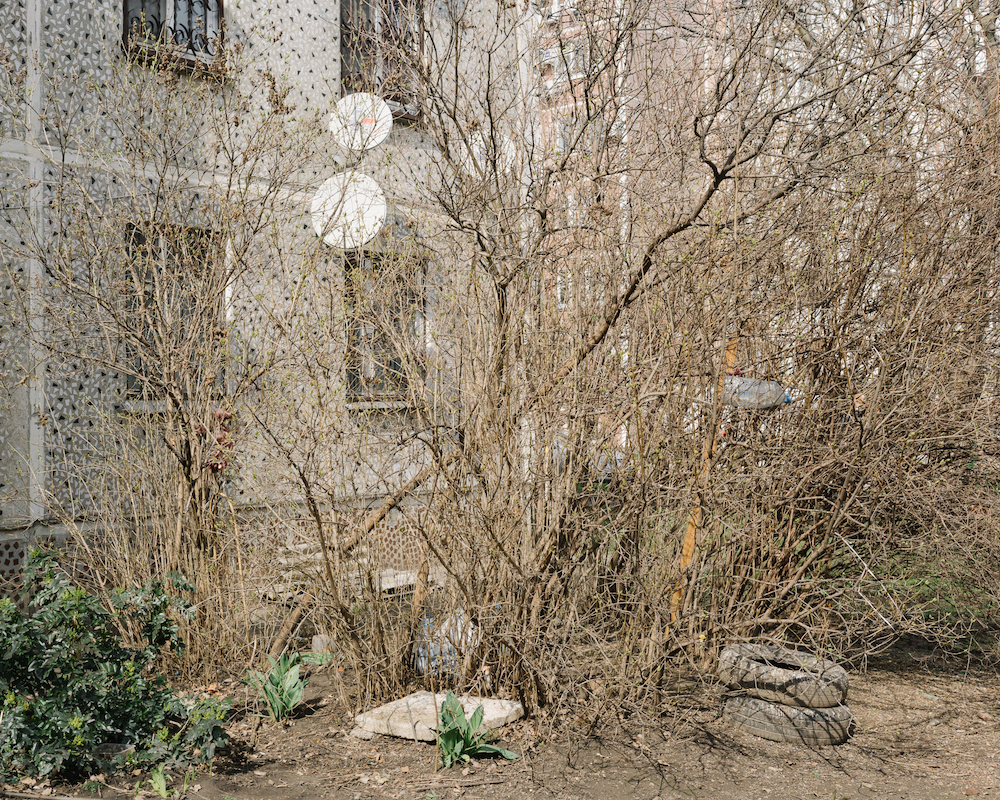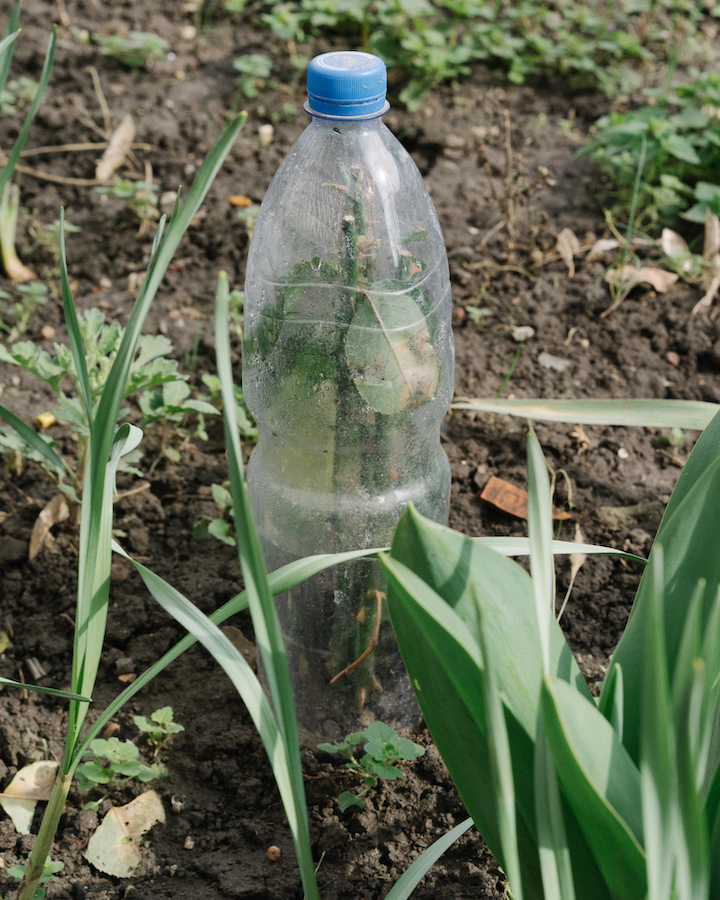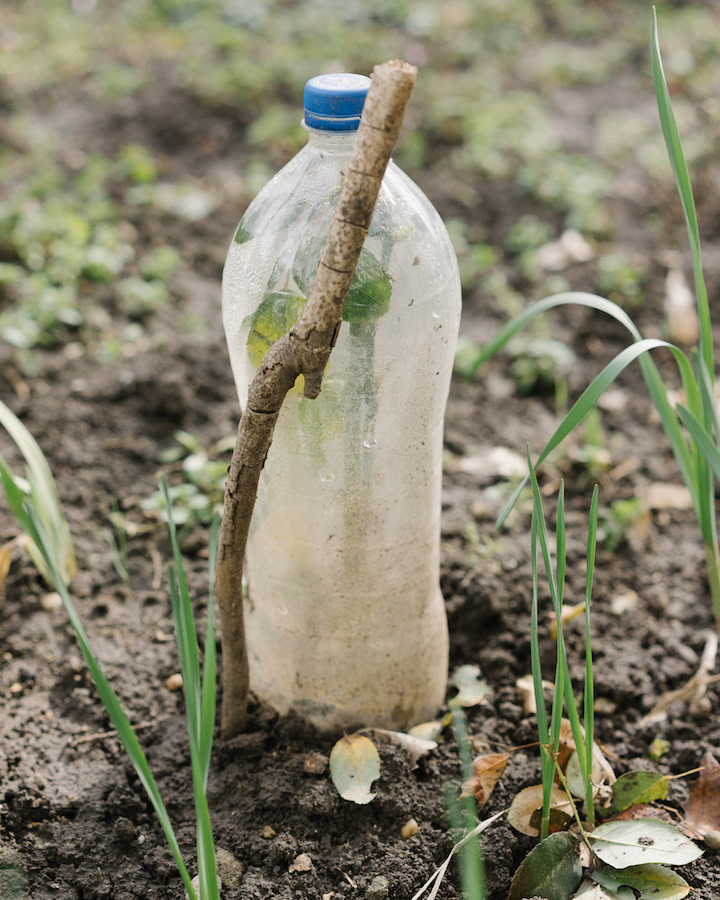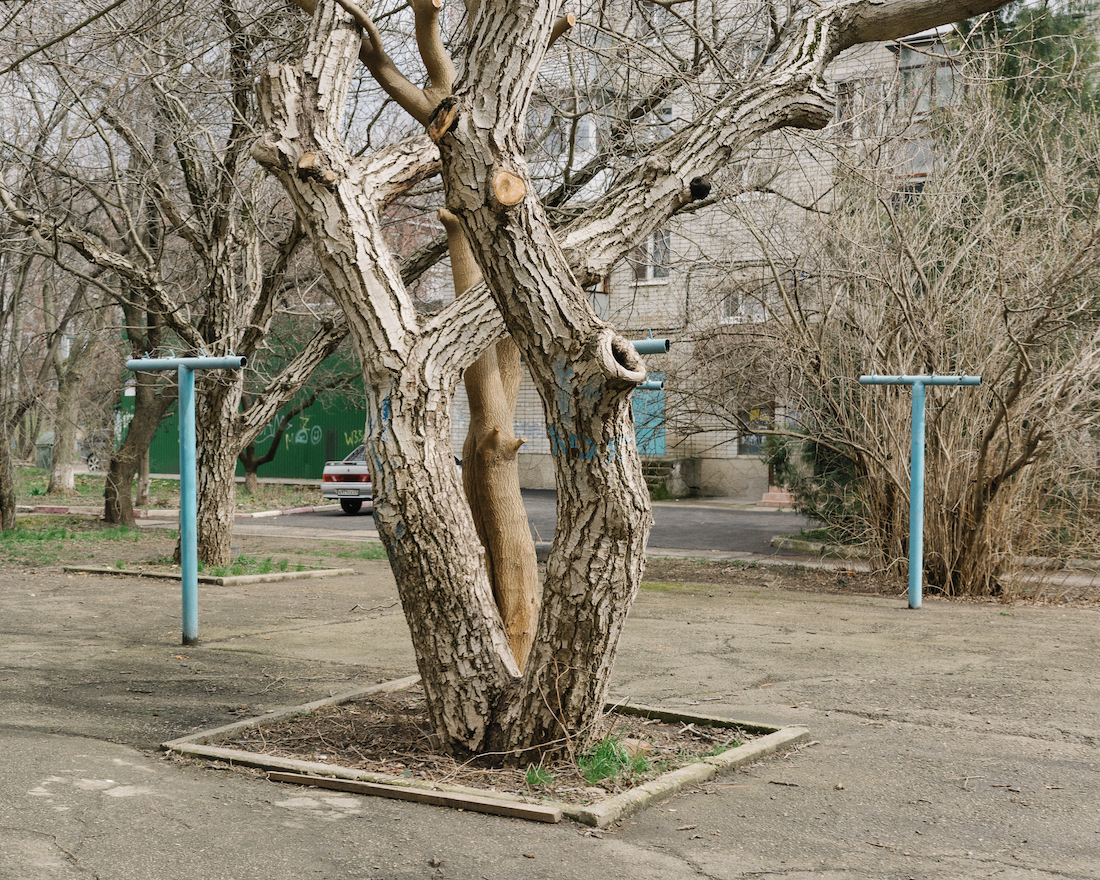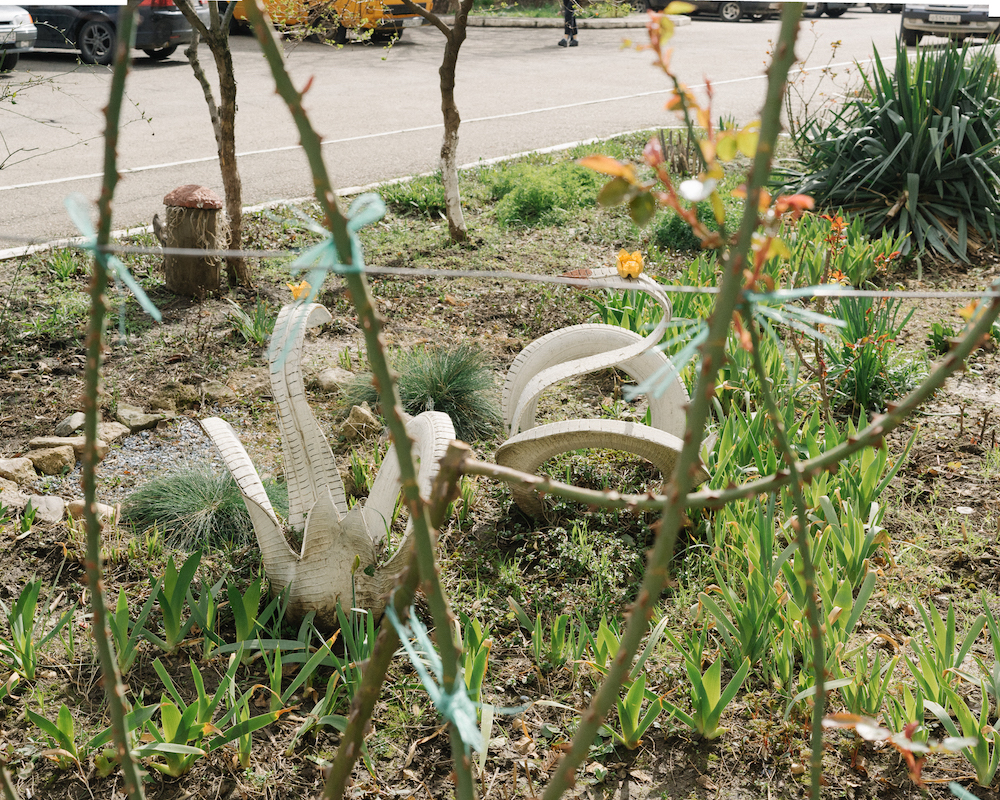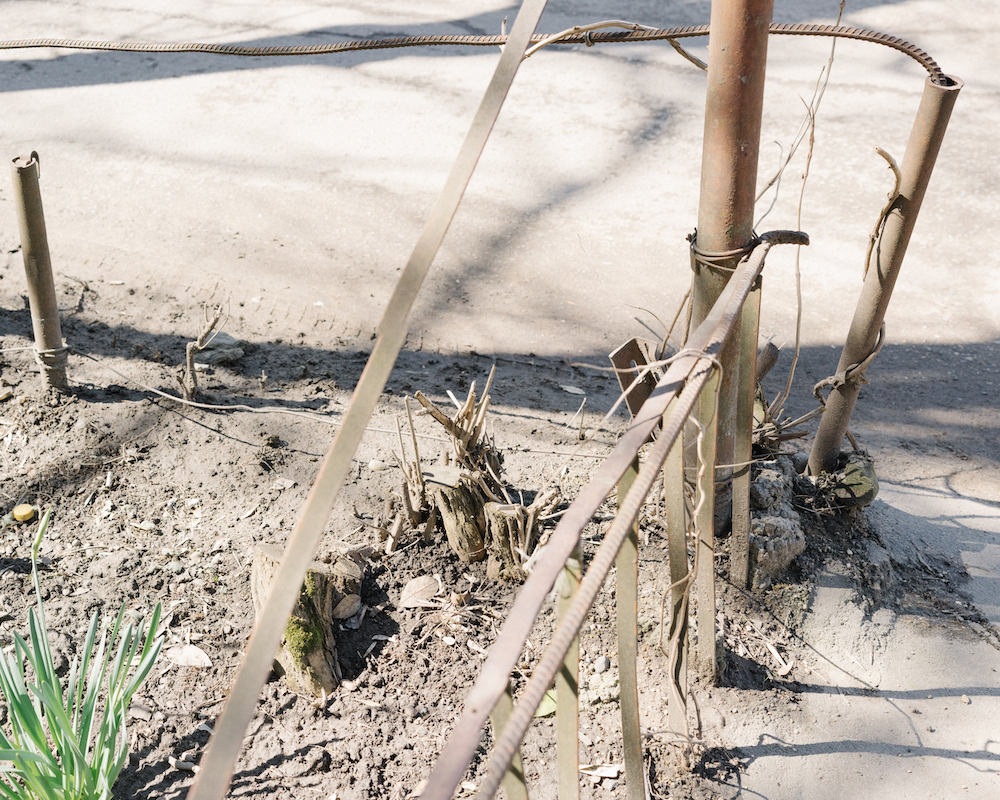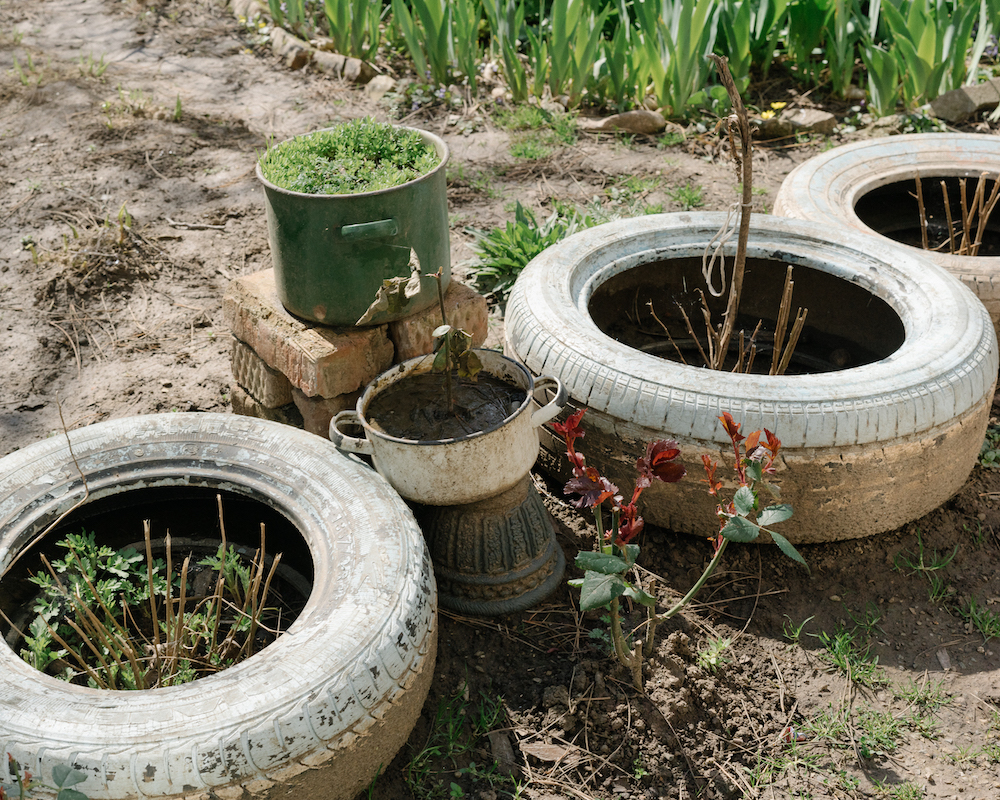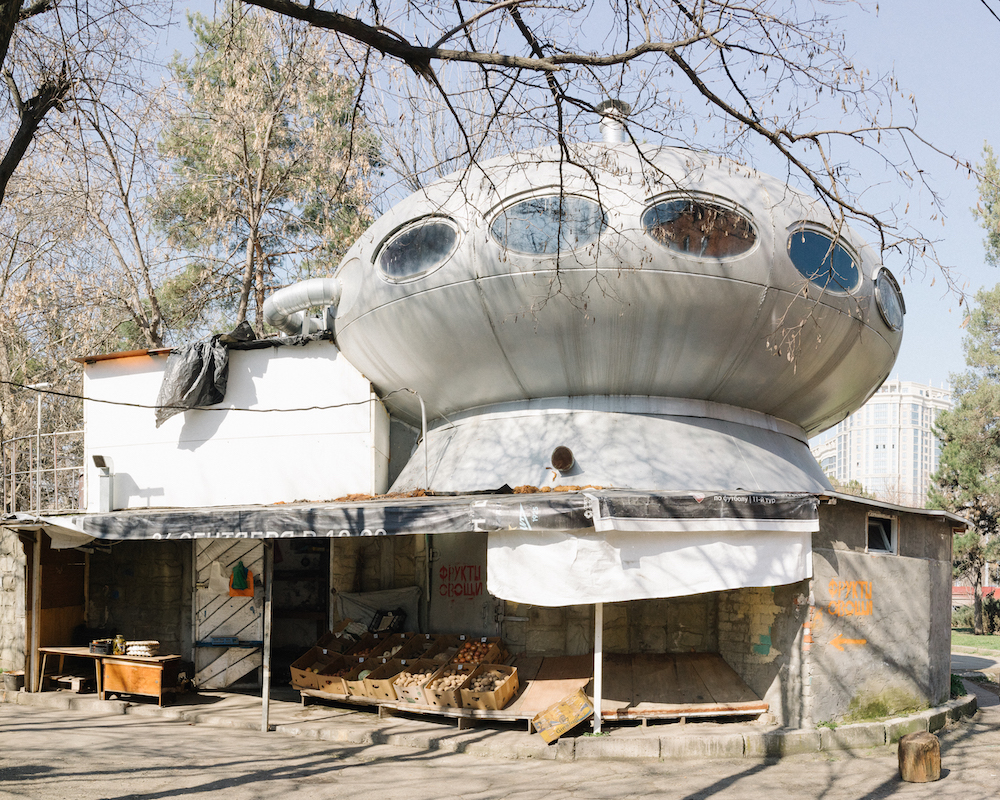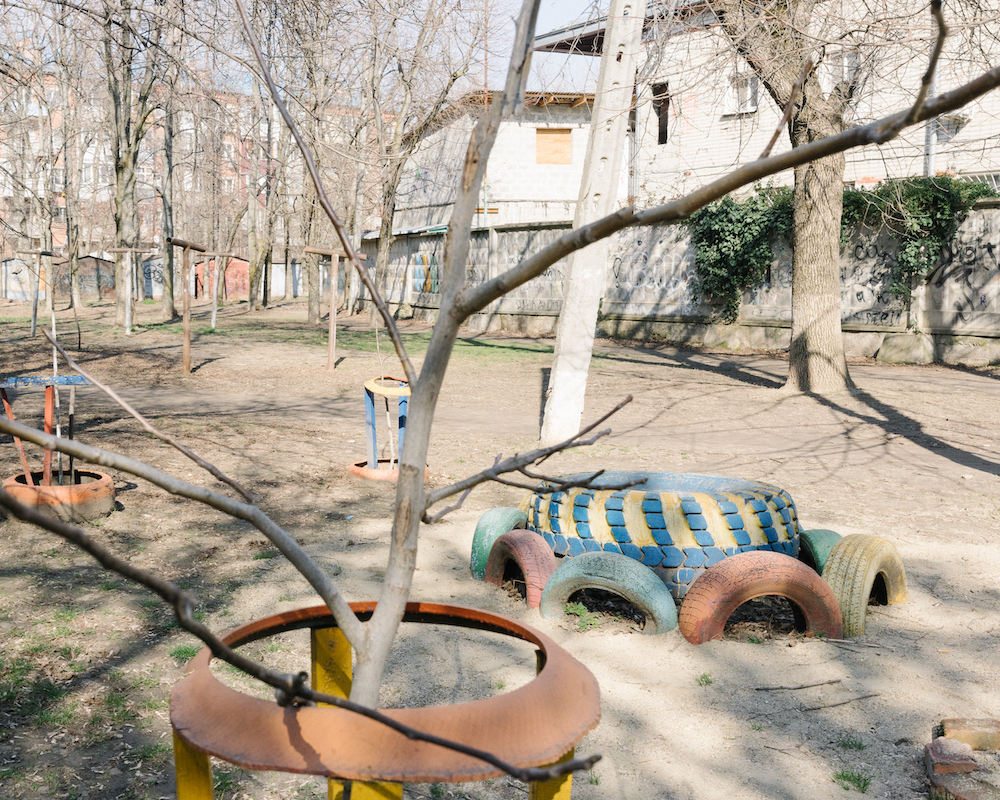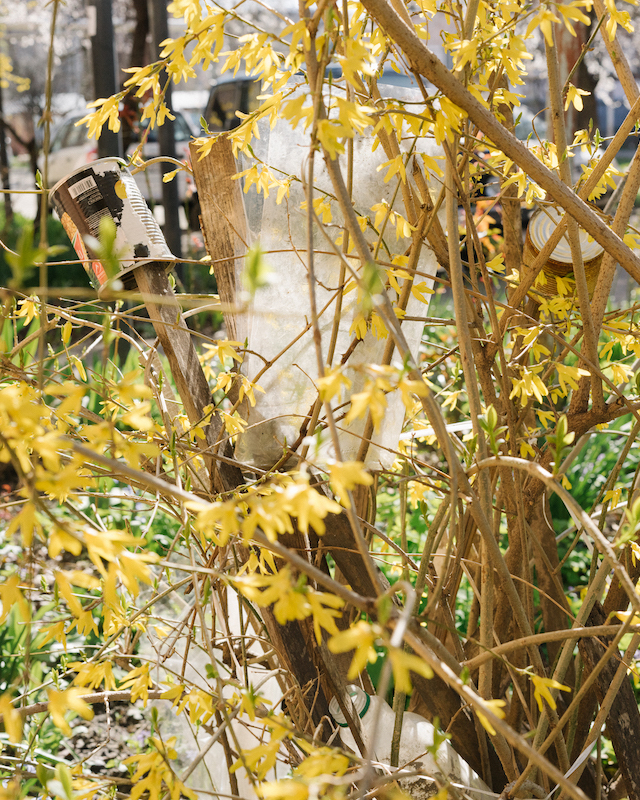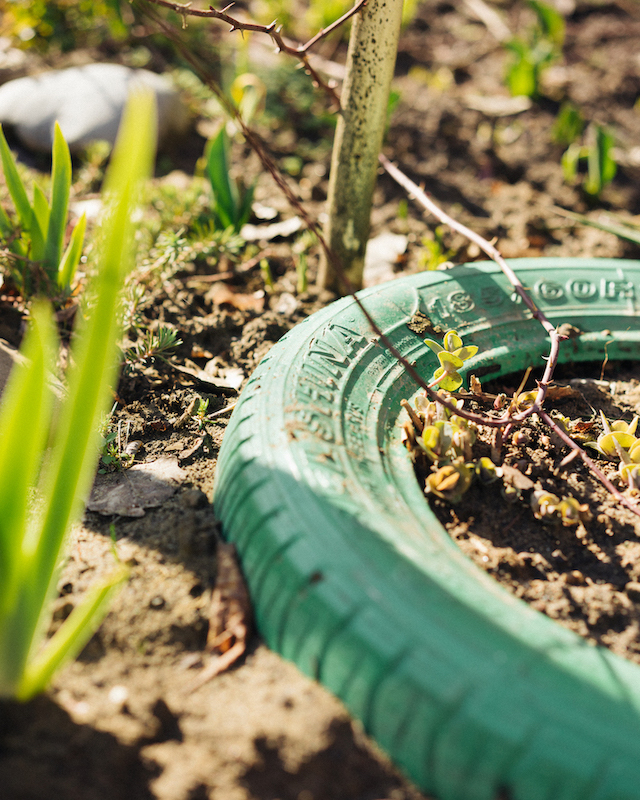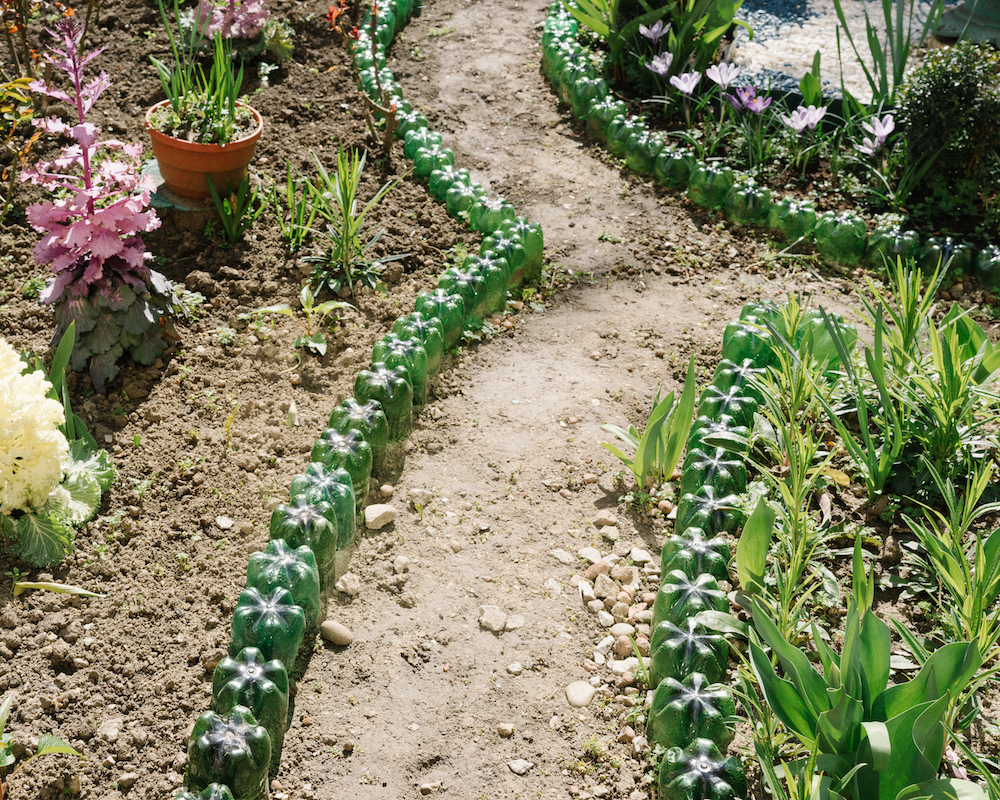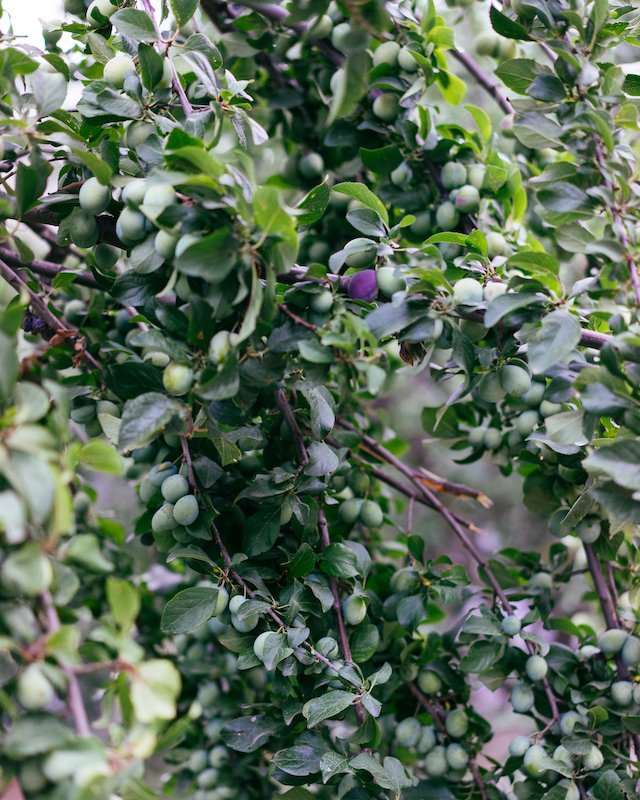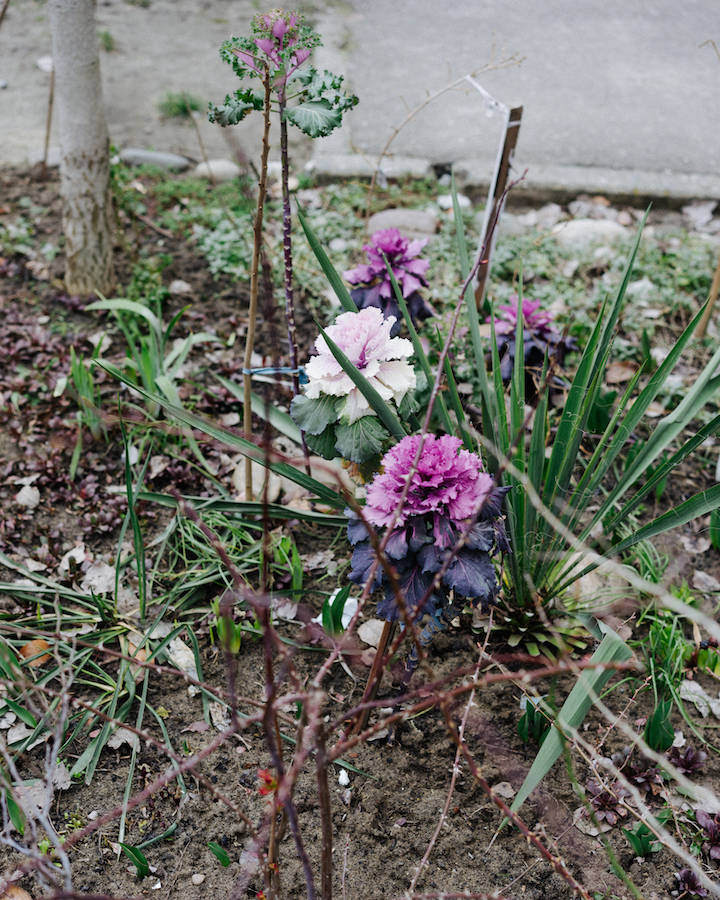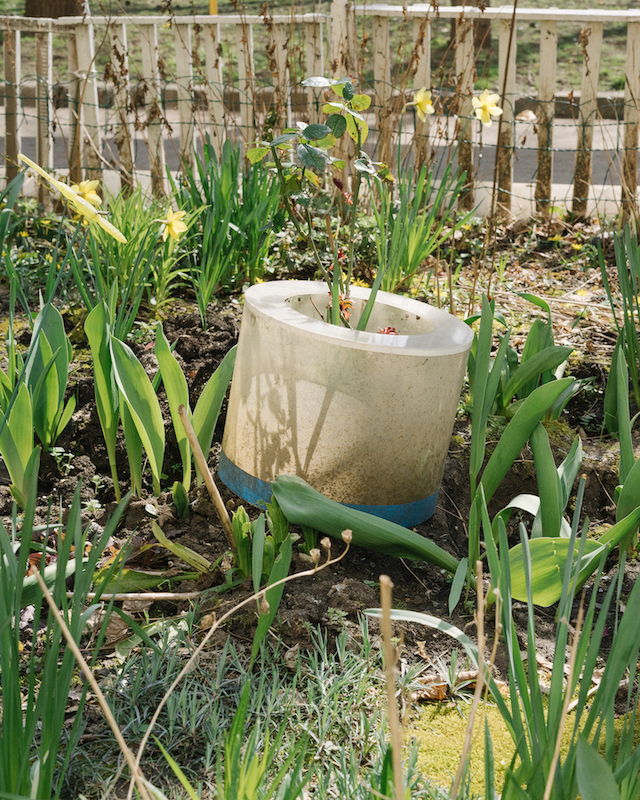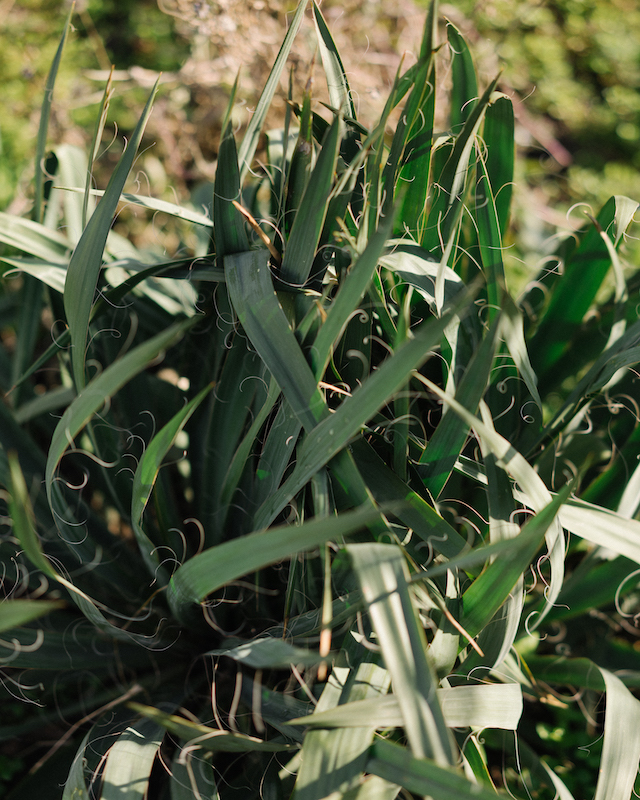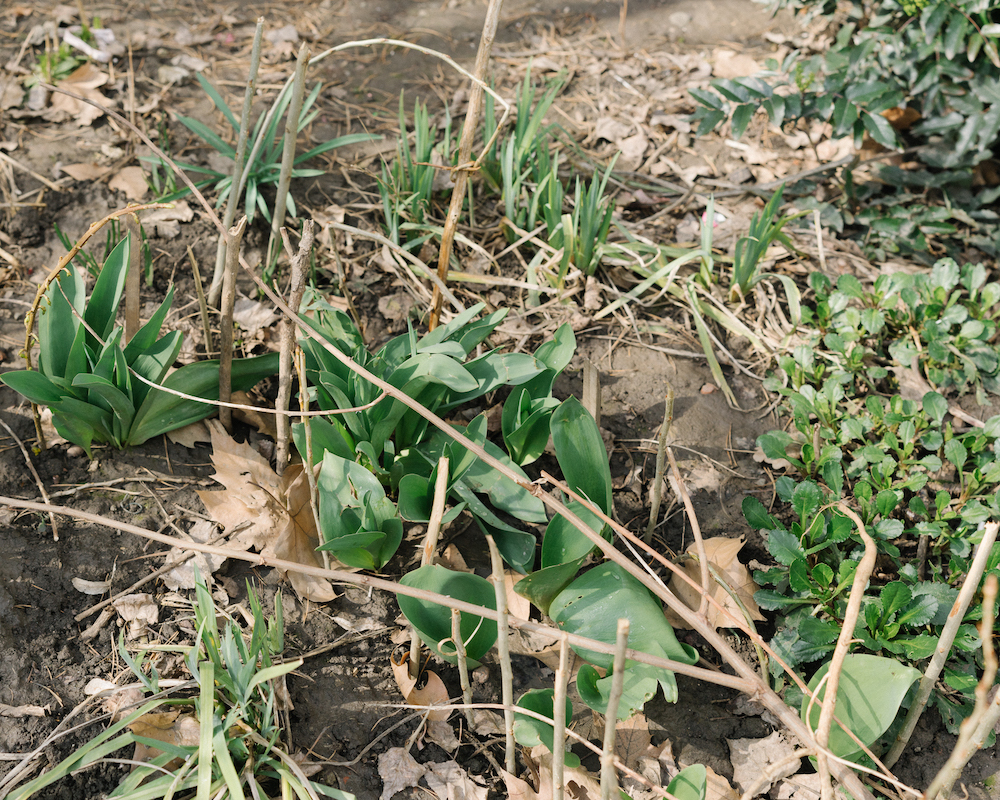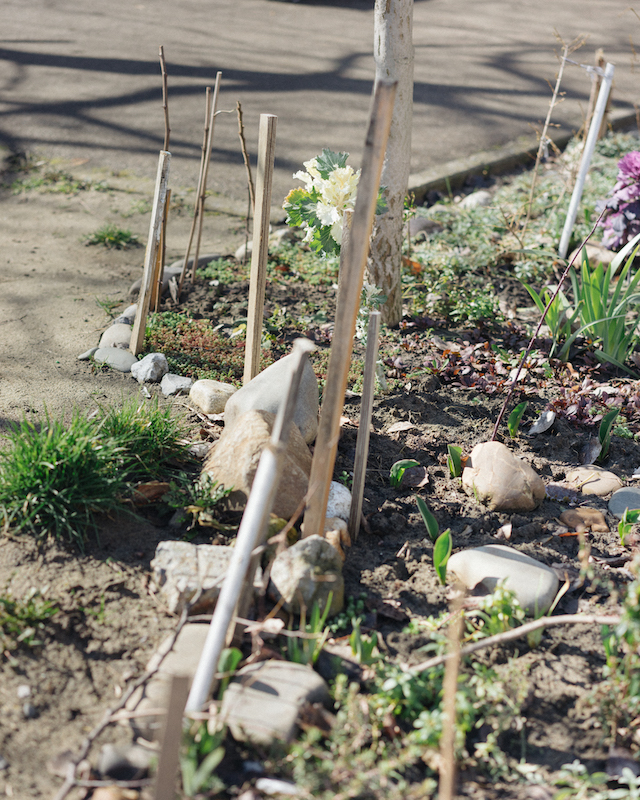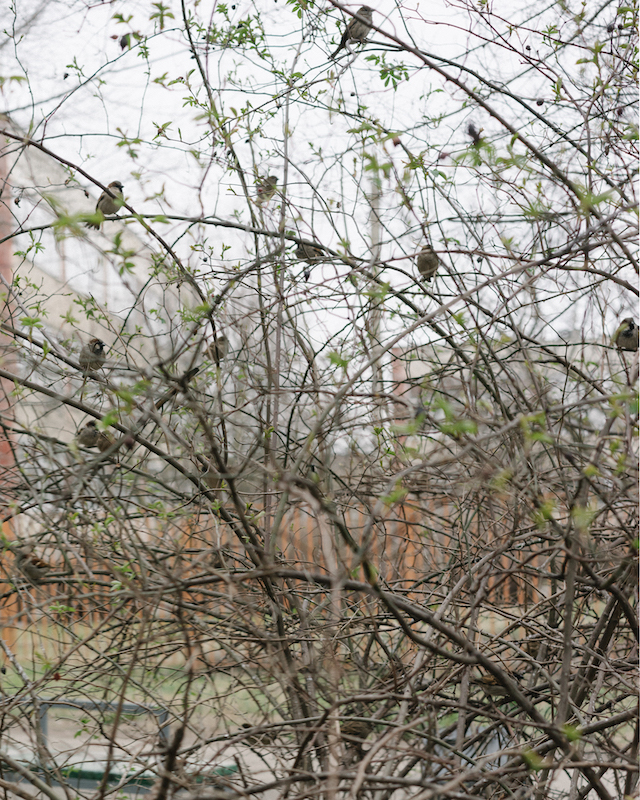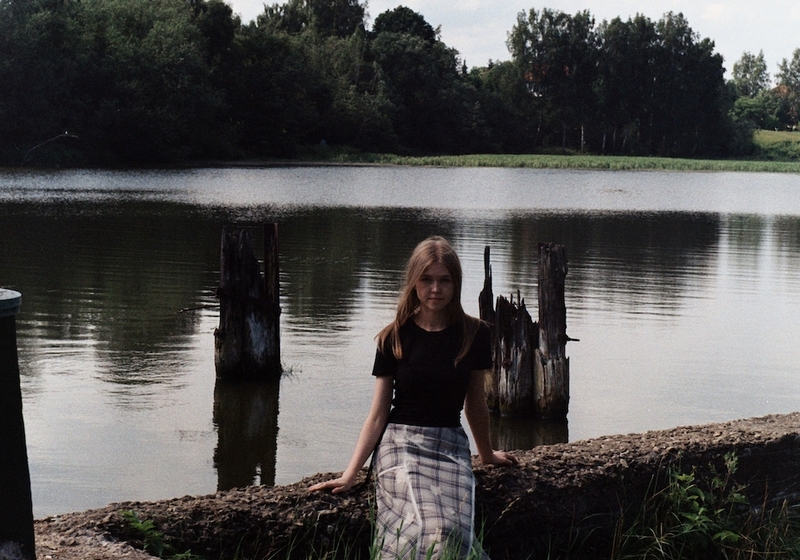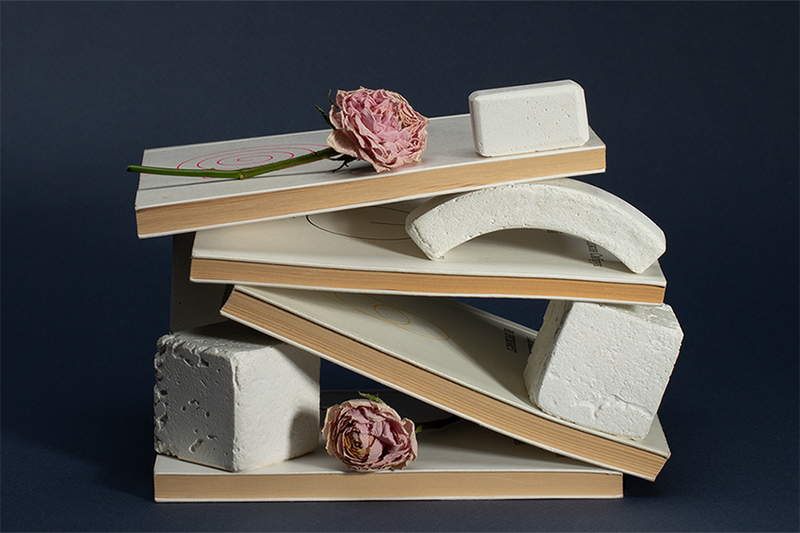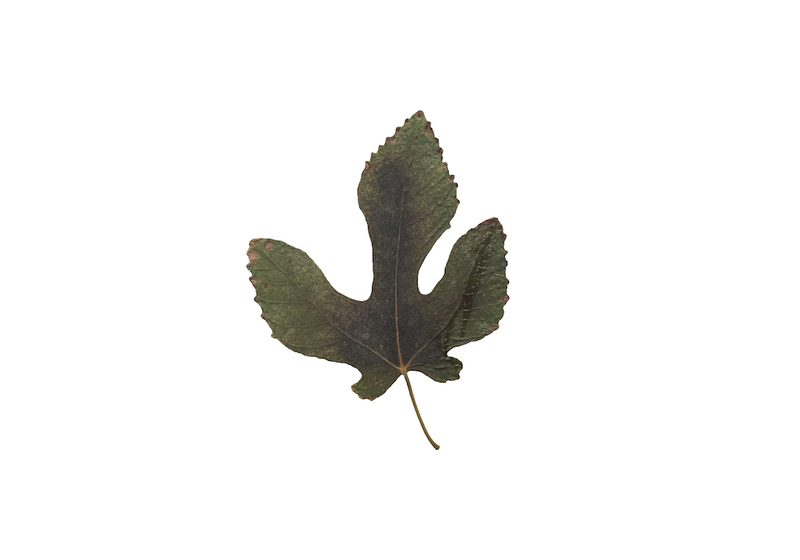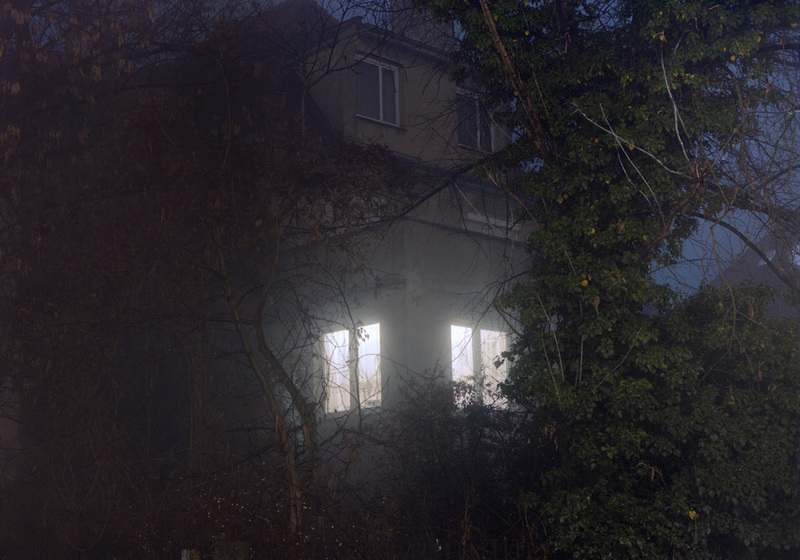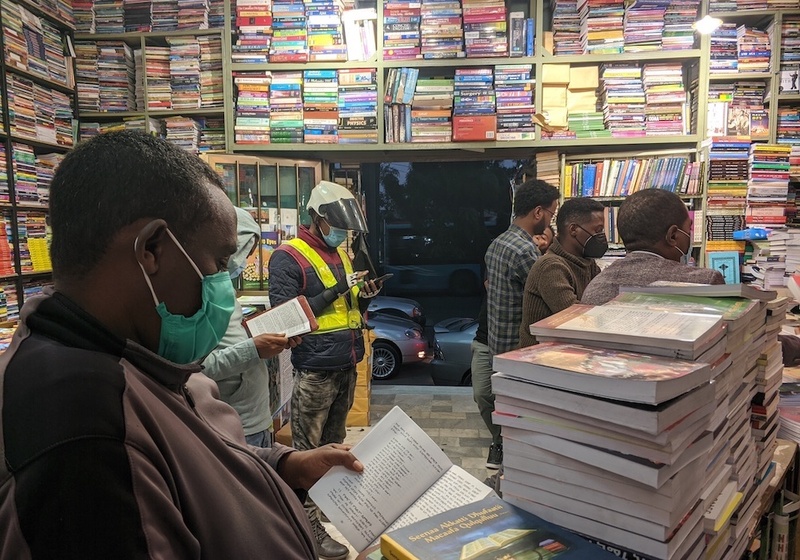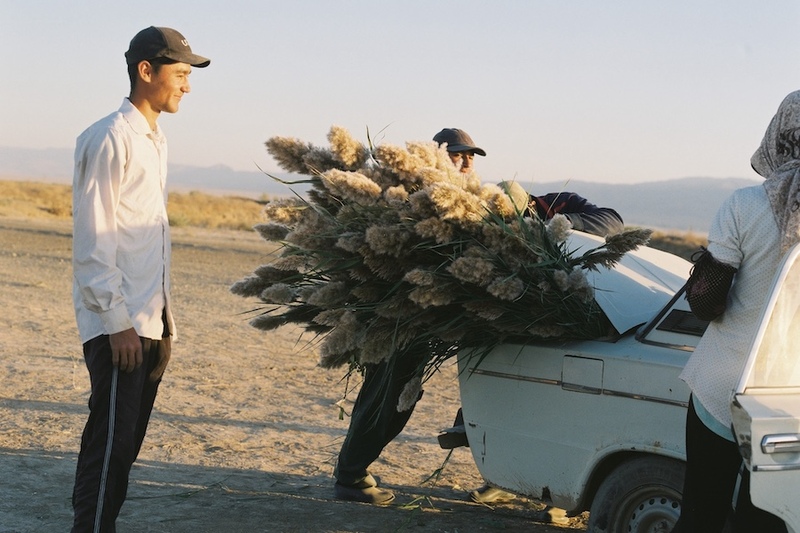Two years ago, photographer Margo Ovcharenko returned to her native Krasnodar—a place she used to visit only irregularly—this time to stay there longer to continue working on one of her photo series. We present her ongoing project about the urban front gardens of the region’s capital and a short interview where she speaks about the changes that have taken place in the city and its creative environment.
Krasnodar has changed a lot. I left it thirteen years ago, and since then its population has increased from 600,000 to almost a million, without counting the suburbanites. The suburbs faced a real disaster: a huge number of buildings were erected, adding a totally monstrous look to the city. New apartment complexes have appeared, with constant floods starting in some of them and fires in the others. Public transport is not developing, there are no bicycles one would find logical to use at least during the warm season. Old trolleybuses and minibuses have not been replaced since my high school years . I suppose there are activists who are doing something to change the situation, but I don’t travel to the city regularly so it’s harder for me to notice it. Although today’s Krasnodar differs a lot from the city of my childhood, some things remain the same: for example, every imaginable plant keeps growing around. Near my house, in the front garden, a neighbor is cultivating bananas. They obviously end up dying every winter, but she sees them as an ornamental plant. These front gardens are something I would describe as real, something that is yearly repeated in the city which itself is following a bad scenario. I am glad to see green leaves appearing in Moscow in March and April, but in Krasnodar everything starts blooming much more abruptly, with more aggression and lushness.
I am interested in both urban landscape and its social and gender contexts. One part of my project Country of Women was dedicated to the issue of unpaid female labor—something that women do in their everyday life. Initially, I did not use these photos, but then I decided to develop the topic of plant care in the context of Krasnodar. What I shot there for a month and a half is a draft I would like to later return to.
When I was growing up I had a feeling that there was nobody in Krasnodar—no art community, no artists who work with contemporary art. Only the ZIP group, which was formed literally out of the blue. The younger generation of southern artists created some kind of community—with Rostov-on-Don graffiti guys among them. Everyone was travelling around the neighboring regions, inviting the local artists to take part in group exhibitions. It was important for me when I was growing up. Otherwise, the entire city looked like a desert.
Photography is a complex art medium. It is expensive in terms of production and exposition, and people are reluctant to collect it. For photography to exist, some kind of nutritional ground is needed—provided both by the city administration and individual sponsors. Painting or sculpture seem more self-sufficient to me, while with photography things are more difficult. Now in Krasnodar there is the Typography Center for Contemporary Art, the New Photo School by Elena Sukhoveeva—a woman from the generation of 1980s conceptualists who is also one of my first teachers. In addition, the PhotoVisa festival is held there twice a year. To me it seems to be an exciting and important event, especially given the fact that there are few regional photography festivals—there is also the Uglich Photoparade. But I think the mere fact of their existence is truly great!
